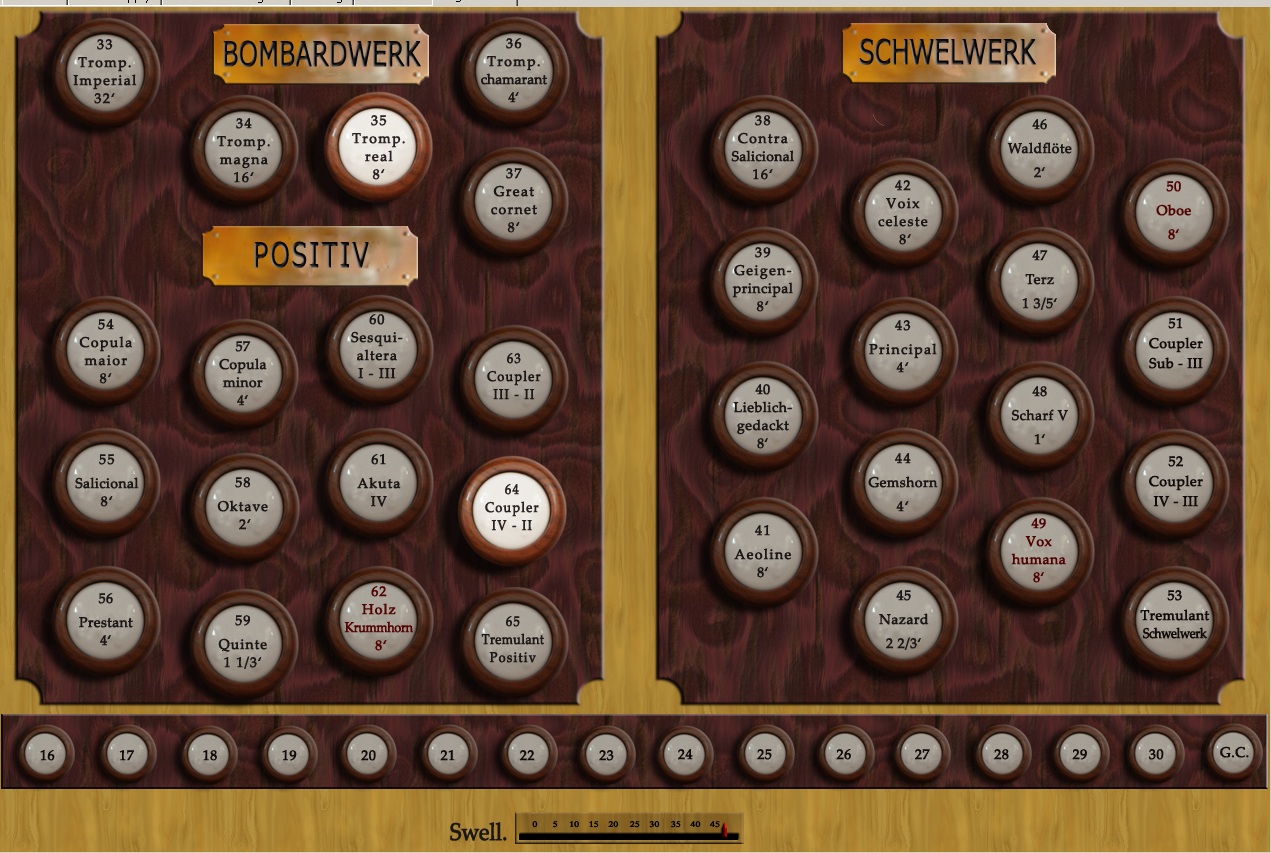


If wet is too wet, or if you want to standardize your reverb, you can always truncate the release samples (we explain how in our DIY Kit Instructions). If you don't have the speaker setup for surround, you can load wet. Naturally, we recommend the wet/surround version.

The samples are long and thorough, and available in dry, wet, and surround. And then there are the mixtures.while they don't approach the 25 ranks of a single famous Jordi Bosch mixture, they are definitely larger than Northern European mixtures. But there are also multi-rank principals, adding a distinctly Spanish Baroque richness. Naturally, there is the magnificent divided Spanish trompeteria, complete with Spanish nomenclature. While the stoplist appears to be thoroughly a tribute to Arp Schnitger, there are several very interesting features to the organ that owe their origin to Iberian organ building. It's thought to be the largest mechanical action organ in Europe. With a case equal in cost to the pipes and voicing, it looks like the masterpieces of the Baroque. If the PAB is the most ambitious organ sampling project ever undertaken, the Laurenskerk Marcussen organ is probably the most ambitious neo-Baroque organ ever undertaken. And it's even got some crazy references to the far distant past like a Voce Umana on the solo for playing late Renaissance Italian Elevations. The strings are lovely, and the flutes are to die for, particularly the harmonic flutes. With both an abundance of solo reeds and mutations, it's got the melody covered. But it also has a very French Romantic disposition, with a good fonds and anches on each of the primary divisions.


 0 kommentar(er)
0 kommentar(er)
